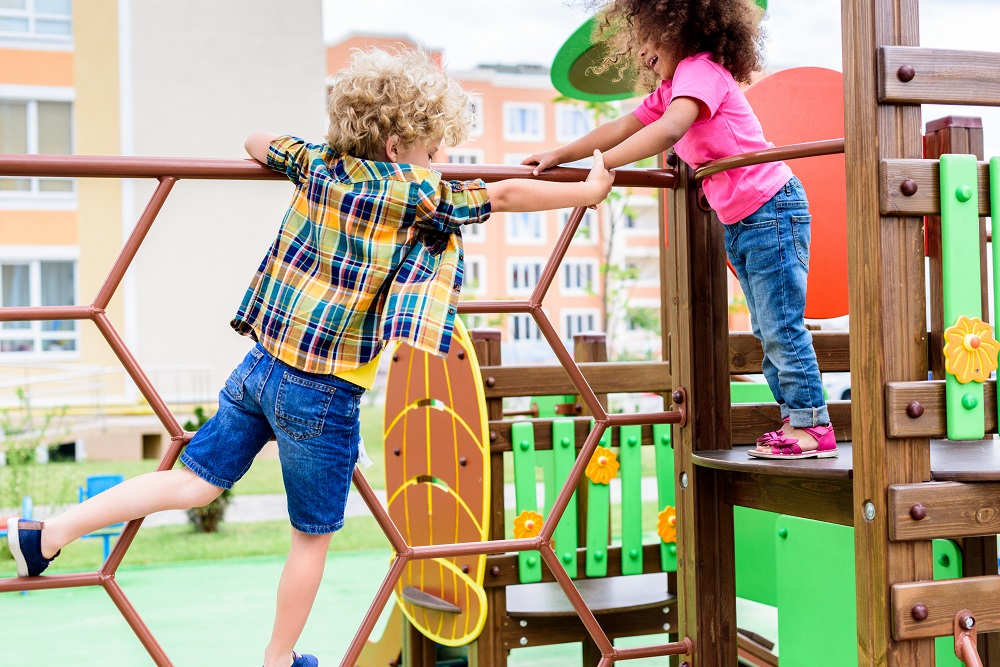In recent years, colleges have been reimagining their campuses to cater to a diverse range of needs, including those of students with children. This shift toward inclusivity reflects a broader understanding of the varied roles students play, including that of parents. Traditional college settings, known for their academic rigor and bustling student life, are now evolving to accommodate the unique challenges faced by student-parents. This transformation is evident in the increasing number of child-friendly facilities, particularly playgrounds, on college campuses.
While students are deeply immersed in studying, attending lectures, and completing assignments, many also have familial responsibilities. Balancing parenthood with academic commitments can be daunting. This is where child-friendly campuses come into play, offering a supportive environment for student-parents. For academic assistance, students can rely on DoMyEssay to do my assignment, ensuring they can dedicate time to both their studies and their children.
Creating Child-Friendly Campuses
Colleges are increasingly acknowledging the importance of being welcoming to students with families. This effort goes beyond just providing playgrounds. It’s about fostering a campus culture that recognizes and supports the needs of students’ families.
This initiative is part of a broader trend toward creating inclusive environments that cater to a diverse student body, acknowledging that many students are juggling parenthood with their studies. By creating spaces that are child-friendly, colleges are sending a message of inclusivity and support to student-parents, helping them to balance their family and academic responsibilities more effectively.
Inclusive Planning and Design
When designing child-friendly spaces, colleges are considering factors such as the diversity in the ages of children who might use the facilities and the convenience for student-parents. These playgrounds and recreational areas are thoughtfully designed to be safe and stimulating for children of various ages, ensuring they cater to the developmental needs of different age groups.
The goal is to create spaces where children can play, learn, and explore in a safe environment. Additionally, ensuring that these areas are in close proximity to academic buildings and study areas is crucial, as it allows student-parents to manage their time and responsibilities more efficiently.
Balancing Safety with Fun
Colleges are taking a comprehensive approach to ensure the safety and enjoyment of children in these spaces. Safety measures are a critical aspect of playground design, ensuring that the equipment is suitable for different age groups and is set up in a way that minimizes the risk of accidents.
This includes using materials that are durable and safe and designing layouts that are both user-friendly and exciting for children. Regular maintenance and safety checks are essential to keep these spaces in top condition and ensure they remain a safe and enjoyable environment for children. This careful balance between safety and fun is key to creating spaces that are both functional and inviting.
Examples of Child-Friendly Campuses
Several colleges have taken notable steps to become more child-friendly. Here are three examples:
Stanford University: Stanford has implemented various childcare and early education programs for children ranging from infants to five years old, emphasizing high-quality care and education. Financial support programs for on-site child care have been introduced, including a tuition reduction program and additional assistance for income-eligible families. Other initiatives support both on-site and off-site child care, offering financial aid such as the Child Care Assistance Grant and Postdoc Family Grant Program.
University of Michigan: The University of Michigan offers extensive support for faculty and student-parents, including paid maternity and parental leave and modification of teaching assignments. For student caregivers, the university provides emergency funding and grants for professional travel with children. Additionally, U-M has established the Campus Child Care Homes Network, a group of state-licensed, home-based childcare providers, and expanded facilities such as diaper changing tables and lactation rooms.
Arizona State University: ASU is recognized for its commitment to student-parents, offering family housing and specific programs to support these students. The university provides child-friendly study spaces and has developed policies to accommodate the unique needs of student-parents, ensuring they can successfully balance their academic and familial responsibilities.
Impact on Student-Parents
The presence of child-friendly spaces on campus has a profound impact on the academic and personal lives of student-parents.
Academic Success and Parental Balance
Having child-friendly spaces on campus allows parents to focus on their studies, knowing their children are engaged in a safe, nearby environment. This balance reduces stress and enhances academic performance.
Building a Supportive Community
These spaces foster a sense of community among student-parents, who can share experiences and support each other. They also provide opportunities for children to socialize and develop in a stimulating environment.
Challenges and Future Directions
Despite the progress, there are challenges in making campuses universally child-friendly. These include budget constraints, space limitations, and differing institutional priorities. However, the trend toward more inclusive campuses is gaining momentum, with colleges increasingly recognizing the value of supporting student-parents.
Addressing Diverse Needs
Understanding the varied needs of student-parents and their children is crucial in designing effective child-friendly spaces. Future initiatives may include more flexible childcare options and extended family support services.
Conclusion
The movement toward child-friendly college campuses is a significant step in recognizing and addressing the needs of the entire student body, including those with children. By creating environments that support both learning and family life, colleges are opening doors to greater academic success and personal fulfillment for student-parents. For those seeking academic assistance, the best essay writing service can provide the necessary support, allowing them to balance their dual roles effectively. As colleges continue to evolve, these inclusive practices will undoubtedly become a cornerstone of campus life.

